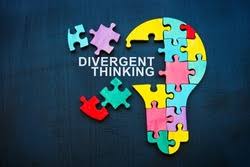We are more than you think we are: Nurturing the strengths of gifted Black students with dyslexia (Guest Blog)
Across the nation, in homes and schools everywhere, are Black students whose intellectual and affective needs are overlooked, disregarded, and seriously under-nurtured. Among these students are some who may have reading difficulties or have been diagnosed as having dyslexia and because of this would they never be considered as a ‘good fit’ for their school’s gifted and talented (GT) program. To qualify for gifted and talented programs in public schools, one of several conditions, including but not limited to, the following, must be met:
- students must be referred for evaluation by their classroom teachers;
- students must have superior level ability scores (usually in verbal comprehension or mathematics) or intelligence scores (IQs) in the higher ranges (120 & above);
- students must have above average to superior achievement scores on a nationally standardized test;
- students must have high performance as is indicated by grades.
In some school districts, parents are also allowed to submit scores from private sources. In many of these cases, parents have the resources to privately prepare their children to successfully meet the testing requirements. This is an egregiously discriminatory practice, placing low income students at a grave disadvantage.
In an effort to address the problem of underrepresentation of students of color and low-income students in gifted programs, many districts are adopting universal screening as a way to ‘cast a wider net’ and locate more students with high potential. Universal screening also gets around the teacher referral process, which might negatively impact students of color in particular, when the majority of classroom teachers are White middle-class females and their students are Black or Latino and may be from low income backgrounds. Research has noted that Black students with the same performance and ability scores as their peers are six times less likely to be referred for gifted programs when their teachers are White. This discrepancy is a major access problem for high potential Black students in our schools. The universal screening allows for all students to be assessed using the same ability test annually. Universal screening is helping to identify more typically underrepresented students, but it is not a panacea. Just imagine if high potential Black students are not able to fairly and equitably access GT programs, how much more difficult it is for students with reading difficulties or those receiving services for special education identification such as dyslexia. Generally, for students with reading disabilities, like dyslexia, without strong advocates and funds for specialized services (individual assessment, specially trained teachers, and other resources) very few will ever get to experience the fast pace, dynamic, accelerated learning that takes place in a GT classroom.
In our educational culture, we tend to focus more attention on students’ weaknesses rather than nurturing their strengths. This deficit-based approach has ‘doomed’ generations of bright students with exceptional conditions to remedial learning classrooms, especially if they happen to be Black. So many educators don’t believe that students with reading disabilities CAN be gifted. Funding and training protocols place restrictions on how monies are spent, who can receive specialized training, and what kinds of enrichment and acceleration opportunities are available to high potential and gifted Black students in our schools. Due to these systemic and persisting discriminatory practices, Black students, particularly those with other identifiable exceptional conditions, like dyslexia, remain the most underserved of all populations in gifted programs across the country.
As researchers, policymakers, practitioners, and advocates, we can change these conditions for students of color who may have high potential, have the capability of being identified as gifted in one or more domains, and also have exceptional learning conditions, like dyslexia. We owe it to these students to provide opportunities for them to demonstrate their intellectual and academic strengths. We can open more doors through our outspoken advocacy, policy changes, research and development of effective professional learning for educators and instructional strategies, designed to accentuate their strengths. None of our communities can afford to lose any talent. To ensure the full development of all students in our care and for the benefit of the greater society, we must work harder to develop targeted policies and practices to ensure that all gifted students, including those with dyslexia, have equitable access to GT programming in schools across the nation.
Independent Scholar/Equity Expert in Gifted Education




Comments
Post a Comment